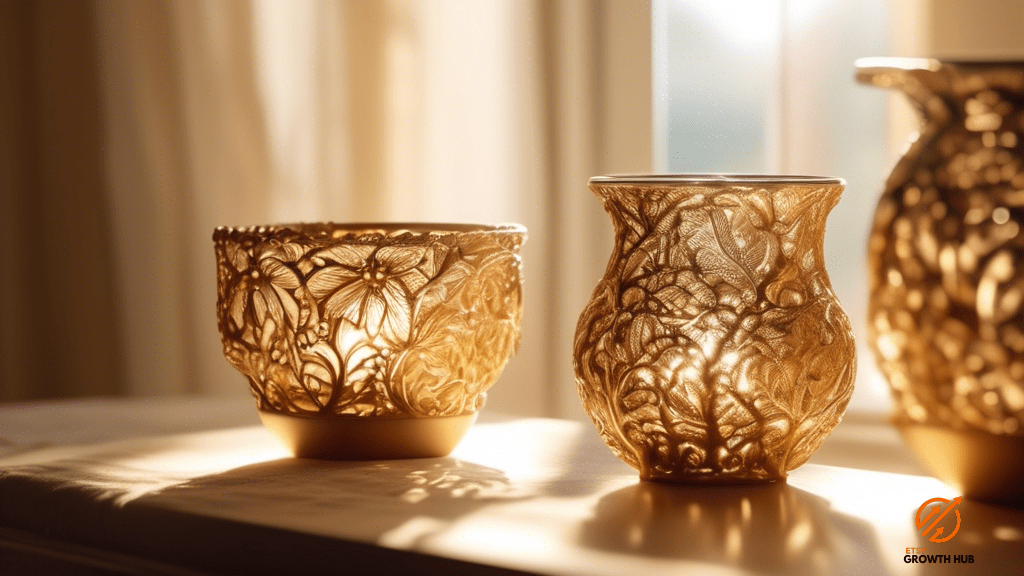Are you a small business owner who creates and sells handmade products? If so, you may have put a lot of time and effort into perfecting your craft, but have you considered the impact that your pricing strategy can have on your sales?
Understanding the psychology behind pricing can be a powerful tool in maximizing your profits and attracting more customers. In this article, we will explore how you can utilize pricing psychology to your advantage and increase the success of your handmade products.
When it comes to pricing, there is more to it than simply assigning a number to your products. The way you price your handmade items can influence how customers perceive their value and ultimately impact their purchasing decisions. By understanding the power of pricing psychology, you can strategically set your prices to appeal to your target market.
This article will delve into various techniques that you can use, such as the anchoring effect, the decoy effect, scarcity and urgency, and incorporating social proof. By implementing these strategies, you can create a pricing strategy that not only reflects the value of your handmade products but also entices customers to make a purchase.
So, let’s dive in and explore the fascinating world of pricing psychology for your handmade products.
Understanding the Power of Pricing
Now that you understand the importance of pricing psychology, you’re ready to dive into the powerful world of pricing and discover how it can truly work its magic on your handmade products.
Pricing is not just about setting a number, but rather about understanding the different factors that can influence a customer’s perception of value. By utilizing pricing psychology techniques, you can create a pricing strategy that not only maximizes your profits but also attracts more customers to your handmade products.
One key aspect of pricing psychology is understanding the concept of perceived value. This refers to how customers perceive the value of your product based on its price. By strategically pricing your handmade products, you can influence customers to perceive them as more valuable than they actually are.
For example, setting a higher price for your handmade products can make them appear more exclusive and luxurious, leading customers to believe that they are of higher quality. On the other hand, setting a lower price can create a perception of affordability, making your products more accessible to a wider range of customers.
In addition to perceived value, pricing psychology also involves understanding the impact of pricing strategies on customer behavior. For example, implementing the "charm pricing" technique, which involves ending prices with the number 9, can create the perception of a lower price and encourage customers to make a purchase.
Another technique is bundling, where you offer a package deal or a discount for purchasing multiple products together. This not only increases the perceived value of your products but also encourages customers to spend more money.
Overall, understanding the power of pricing psychology is essential for effectively pricing your handmade products. By utilizing techniques such as creating a perception of value and implementing strategic pricing strategies, you can attract more customers, increase sales, and ultimately maximize your profits.
So, take the time to explore and experiment with different pricing techniques, and watch as your handmade products flourish in the market.
Applying the Anchoring Effect
Imagine how you can strategically use the Anchoring Effect to set a higher perceived value for your unique creations.
The Anchoring Effect is a psychological phenomenon where people rely heavily on the first piece of information they receive when making a judgment or decision.
In the context of pricing your handmade products, this means that if you set a higher initial price for your item, customers will perceive it to be more valuable and be more willing to pay a higher price for it.
To apply the Anchoring Effect to your pricing strategy, consider starting with a higher price point for your products.
This initial anchor will shape customers’ perception of the value of your creations.
For example, if you’re selling handmade jewelry, you could set the initial price for a necklace at $100, even if your production costs are lower.
This higher starting point will make customers view your jewelry as high-quality and worth the price.
However, it’s important to strike a balance between setting a high anchor and pricing your products too high.
You want to create a perception of value, but you also need to ensure that your prices are competitive and reasonable.
Conduct market research to understand the price range for similar handmade products and adjust your anchor accordingly.
By effectively applying the Anchoring Effect, you can shape customers’ perception of the value of your handmade products and increase their willingness to pay a higher price.
Leveraging the Decoy Effect
When deciding between options, you’ll be drawn to the one that appears more favorable due to the influence of the Decoy Effect. This psychological phenomenon occurs when a third, less desirable option is introduced to sway your decision towards a specific choice.
As a handmade product seller, you can leverage the Decoy Effect to influence your customers’ purchasing decisions. Here are some ways you can use this pricing psychology technique to your advantage:
- Create a decoy product: Introduce a third option that is priced slightly higher than your target product but has less desirable features or benefits. This will make your target product seem like a better value in comparison.
- Highlight the differences: Clearly show the advantages of your target product over the decoy option. Emphasize the unique features, superior quality, or additional benefits to make it even more appealing.
- Use visual cues: Present the decoy product alongside your target product in a way that highlights the differences. This can be done through product images or physical displays to visually demonstrate the contrast.
- Set the right price points: Carefully consider the pricing of your target product and the decoy option. The difference in price should be significant enough to make the target product appear more attractive, but not so large that it raises suspicions.
- Communicate value: Clearly communicate the value proposition of your target product through compelling product descriptions, customer reviews, and testimonials. Highlight how it meets the needs and desires of your target customers.
By leveraging the Decoy Effect, you can nudge customers towards choosing your target product over other options. However, it’s important to ensure that your pricing strategy is transparent and ethical, providing genuine value to your customers.
Utilizing Scarcity and Urgency
By creating a sense of scarcity and urgency, you can entice customers to make a purchase sooner rather than later. One effective way to do this is by limiting the availability of your handmade products.
For example, you can create a limited edition line of products that are only available for a certain period of time. This can make customers feel like they have to act quickly in order to secure one of these exclusive items. Additionally, you can use phrases like "limited quantities available" or "selling out fast" to create a sense of urgency. This can create a fear of missing out in customers and push them to make a purchase right away.
Another strategy is to offer time-limited promotions or discounts. By giving customers a deadline to take advantage of a special offer, you create a sense of urgency.
For example, you can offer a discount for the first 50 customers or for a limited time period, such as 24 hours. This can make customers feel like they need to act quickly in order to get the best deal. Additionally, you can use countdown timers or display the number of items left in stock to create a sense of scarcity. This can create a sense of urgency and encourage customers to make a purchase before the product runs out.
Overall, utilizing scarcity and urgency in your pricing strategy can be a powerful way to increase sales of your handmade products. By creating a sense of exclusivity and time-limited offers, you can entice customers to make a purchase sooner rather than later.
Incorporating Social Proof
Get ready to boost your sales like never before by showing off the overwhelming social proof that your customers just can’t resist! Incorporating social proof into your marketing strategy is a powerful way to build trust, credibility, and increase your sales.
Here are four effective ways to showcase social proof for your handmade products:
- Customer testimonials: Share positive reviews and testimonials from satisfied customers. Highlight their experiences and how your products have made a difference in their lives. This will help potential customers see the value and quality of your products.
- Influencer endorsements: Collaborate with influencers or industry experts who align with your brand and have a significant following. By having them endorse your handmade products, you can leverage their credibility and reach to attract new customers.
- User-generated content: Encourage your customers to share photos and videos of themselves using your handmade products on social media. This not only creates authentic social proof but also helps to build a community around your brand.
- Trust badges and certifications: Display trust badges and certifications on your website to show that your handmade products meet certain quality standards. This can include certifications for eco-friendly materials, fair trade practices, or any other relevant industry standards.
Incorporating social proof into your marketing strategy can have a powerful impact on your sales. By leveraging customer testimonials, influencer endorsements, user-generated content, and trust badges, you can build trust and credibility with your target audience, ultimately leading to increased sales for your handmade products.
Frequently Asked Questions
How can I determine the optimal price for my handmade products?
To determine the optimal price for your handmade products, you should consider factors like the cost of materials, your time and effort, and the market demand. Experiment with pricing and analyze customer feedback to find the sweet spot.
What are some effective strategies for creating a sense of urgency in my pricing?
To create a sense of urgency in your pricing, consider limited-time offers, countdown timers, and exclusive discounts for a certain period. By creating a time-sensitive atmosphere, customers will be more motivated to make a purchase before it’s too late.
How can I leverage social proof to increase the perceived value of my handmade products?
Want to increase the perceived value of your handmade products? Leverage social proof! By showcasing positive reviews, testimonials, and customer photos, you’ll create trust and credibility, making your products more desirable to potential buyers.
Are there any ethical considerations when applying pricing psychology techniques to my handmade products?
Yes, there are ethical considerations when applying pricing psychology techniques. It’s important to be transparent and not manipulate customers. Ensure your pricing reflects the true value of your handmade products and provide honest information to build trust.
What are some alternative pricing strategies that I can explore for my handmade products, apart from anchoring and decoy effects?
u0026quot;Thinking outside the box, why not try the ‘bait and switch’ strategy for your handmade products? Offer a lower-priced item to attract customers, then upsell them with your high-quality, higher-priced creations.u0026quot;
Last Updated: January 22, 2024
Disclosure: We may receive affiliate compensation for some of the links in this article at no additional cost to you if you decide to purchase a product. You can read our affiliate disclosure in our privacy policy.
Kevin Fairbanks is your expert navigator in the world of Etsy business. With a passion for creativity and a deep understanding of the e-commerce landscape, Kevin brings a wealth of knowledge to aspiring and established Etsy sellers alike.
As a seasoned entrepreneur and successful owner of multiple Etsy shops, Kevin knows firsthand the challenges and triumphs of the Etsy marketplace. His journey is one of innovation, perseverance, and a keen eye for market trends, making him an invaluable guide for anyone looking to succeed on Etsy.
Kevin’s expertise extends beyond just shop management; he is adept in areas such as SEO optimization, effective marketing strategies, and financial planning for online businesses. His insights are grounded in real-world experience, offering practical and actionable advice.
Join Kevin as he shares his journey and expertise on Etsy Growth Hub. Whether you’re starting your first Etsy shop or looking to expand your existing business, Kevin’s guidance is designed to help you navigate the complexities of Etsy selling with confidence and creativity.
Stay tuned with Kevin’s latest strategies and tips on Etsy Growth Hub to transform your passion into a thriving online business. His dedication to empowering Etsy sellers is evident in every piece of advice he shares, helping you turn your Etsy dreams into reality.
Verified and Approved by:

Kevin Fairbanks
Head of SEO
Like This Article?
Share with your friends
Table of Contents
Latest Articles
Keep Reading
-
Maintaining Compliance With Customer Privacy
Learn the essential tips for maintaining compliance with customer privacy regulations and safeguarding your business. Protect sensitive data and avoid hefty fines – click here to become a privacy-savvy pro!
-
Effective Strategies For Engaging Etsy Customers
Boost your Etsy sales with these proven strategies for engaging customers. Unleash your creativity and captivate your audience today! Click here to learn more.
-
Making The Most Of Instagram Live For Your Etsy Shop
Boost your Etsy shop’s success with these Instagram Live tips! Learn how to engage and connect with your audience like never before. Don’t miss out on this opportunity to take your business to the next level. Click here now!




